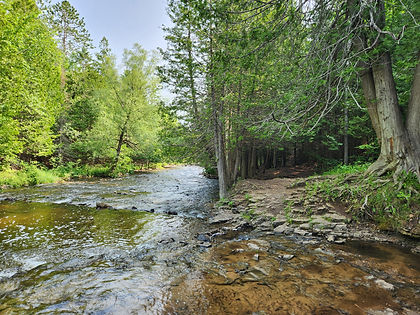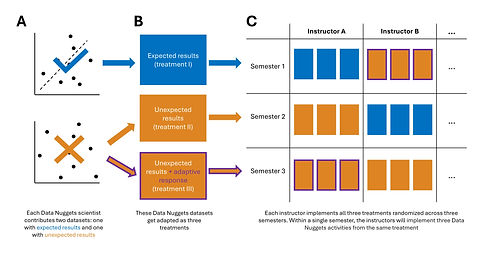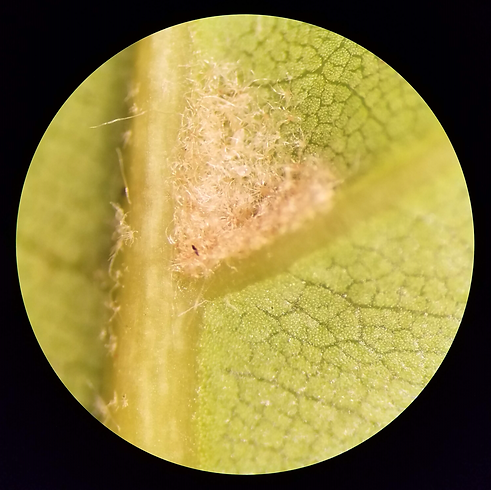Department of Biological Sciences
University at Buffalo, Buffalo, NY

Research Projects

Adaptive responses to unexpected results in research
Recent recommendations for STEM education have emphasized the importance of engaging students in authentic research experiences in classroom settings. This exposure to authentic research means that students experience perceived failures, such as highly variable data and unexpected results, earlier and more frequently in their STEM careers. Resilience to unexpected outcomes is one of the most important determinants of success in science and may influence a student’s persistence in their STEM major. However, students rarely see adaptive responses to unexpected results modeled by instructors or featured scientists in the classroom. In my postdoc, I am leading a discipline-based education research study in which I document adaptive strategies to cope with unexpected results and manipulate whether instructional materials feature unexpected results with and without examples of adaptive failure resilience using real scientist stories. This proposed work will illuminate how to prepare students for unexpected results, an inevitable part of the scientific process.
Mechanisms and patterns of indirect plant defense
Leaf surfaces are tiny worlds navigated by microscopic arthropods that can be plant friends or foes. Many plants have evolved structures hypothesized to house or feed mutualistic arthropods, which in turn provide a line of defense for the plant against harmful arthropods or fungi. Mite domatia are one example of these indirect defense traits, supporting communities of fungivorous and predatory mites that improve plant fitness by reducing damage from herbivores and pathogens. I have conducted research on the prevalence and morphology of domatia across taxa, as well as on how foliar mite communities respond to habitat disturbance at micro and macro scales.
Find some of this published research here:


Defense trait correlations across scales
Plants have a variety of strategies that they use to defend themselves against organisms that want to eat them. Plant defense theory has long predicted that suites of traits should evolve in concert, manifesting as complex covarying arsenals. However, we lack an understanding of whether correlations between defense traits persist across levels of biological organization, despite the fact that the forces that drive these patterns have the strong potential to shift across biological scales. In this dissertation chapter, I assess whether correlations between defense traits persist or break down within vs across Vitis species. Similarly, I measure the scale-dependency of trait-environment correlations.
Find my first dissertation chapter, published in Evolution, below:
Evolution and ecology of plant crystals
Many plant species contain crystals made of calcium oxalate, the same compound that makes up human kidney stones. These crystals are diverse in form and location within plants, suggesting that they may vary in function. Our primary hypotheses for their role within plants include functioning as a defense against herbivores, or as form of storage for calcium, among others. However, we do not have a clear idea of whether the shape of these crystals predicts their function, nor just how prevalent this diversity of form is across the plant kingdom. Therefore, I am conducting a suite of bioassays and phylogenetic surveys to characterize the ecology and distribution of this seldom studied plant trait.
